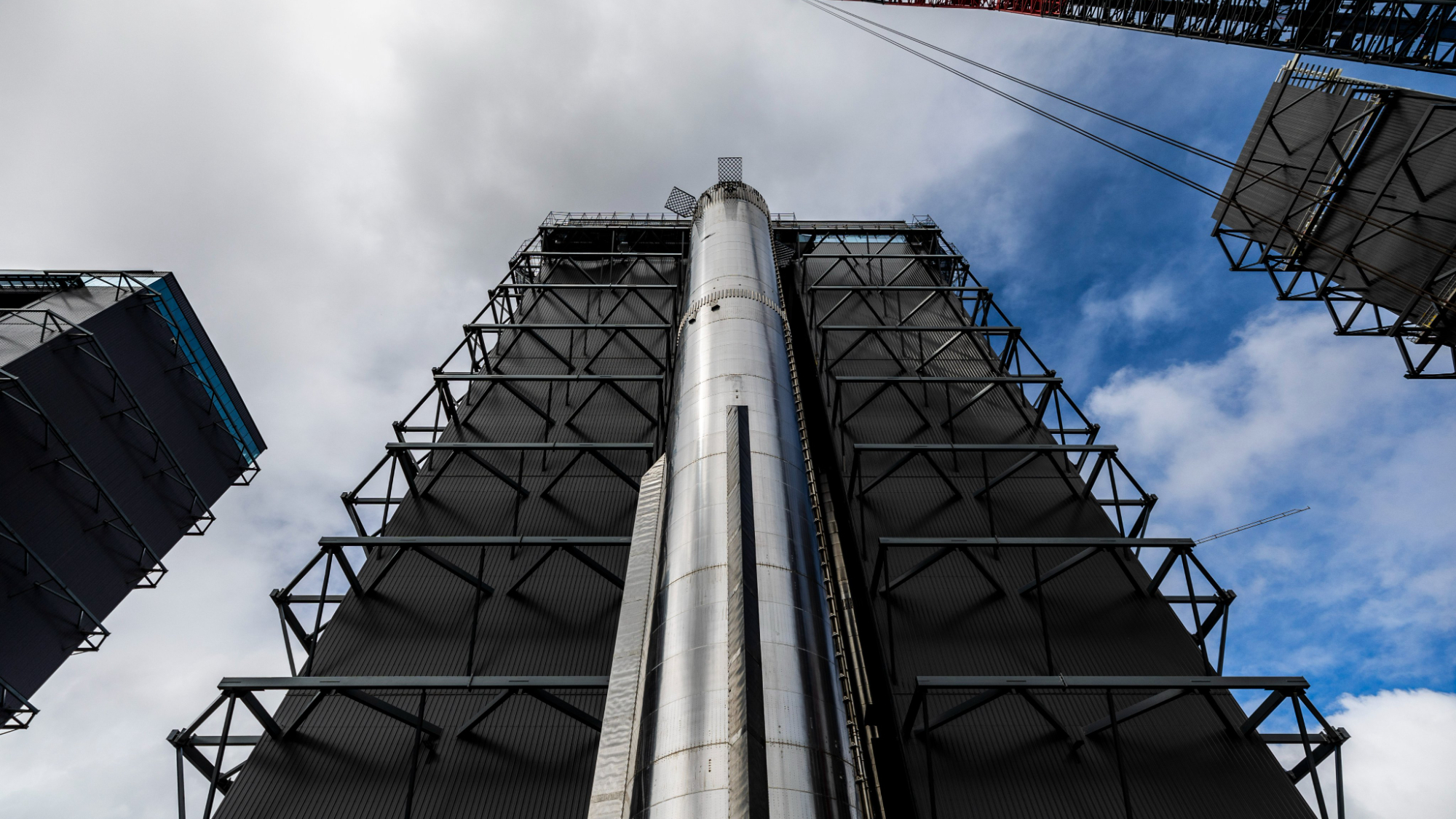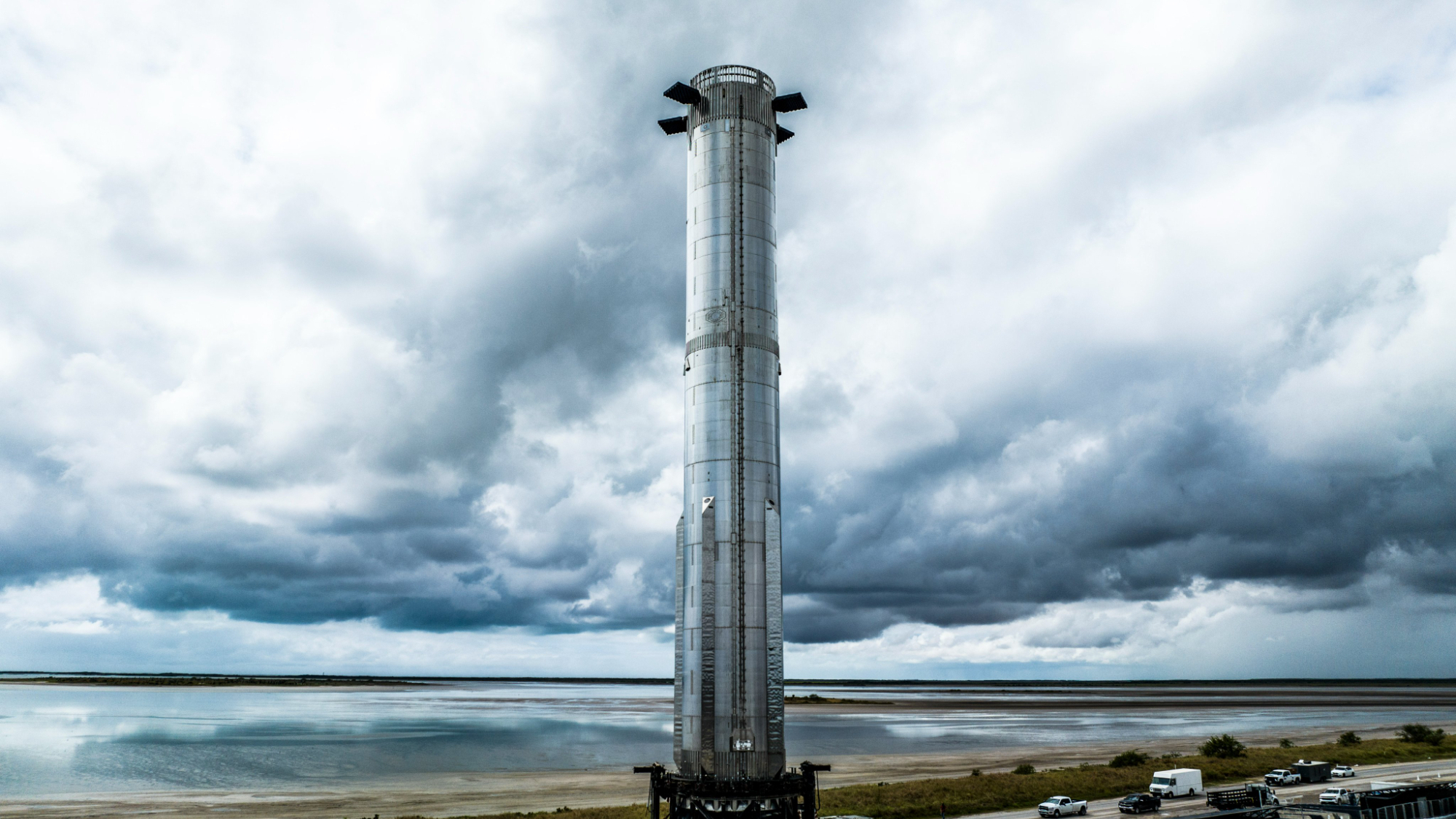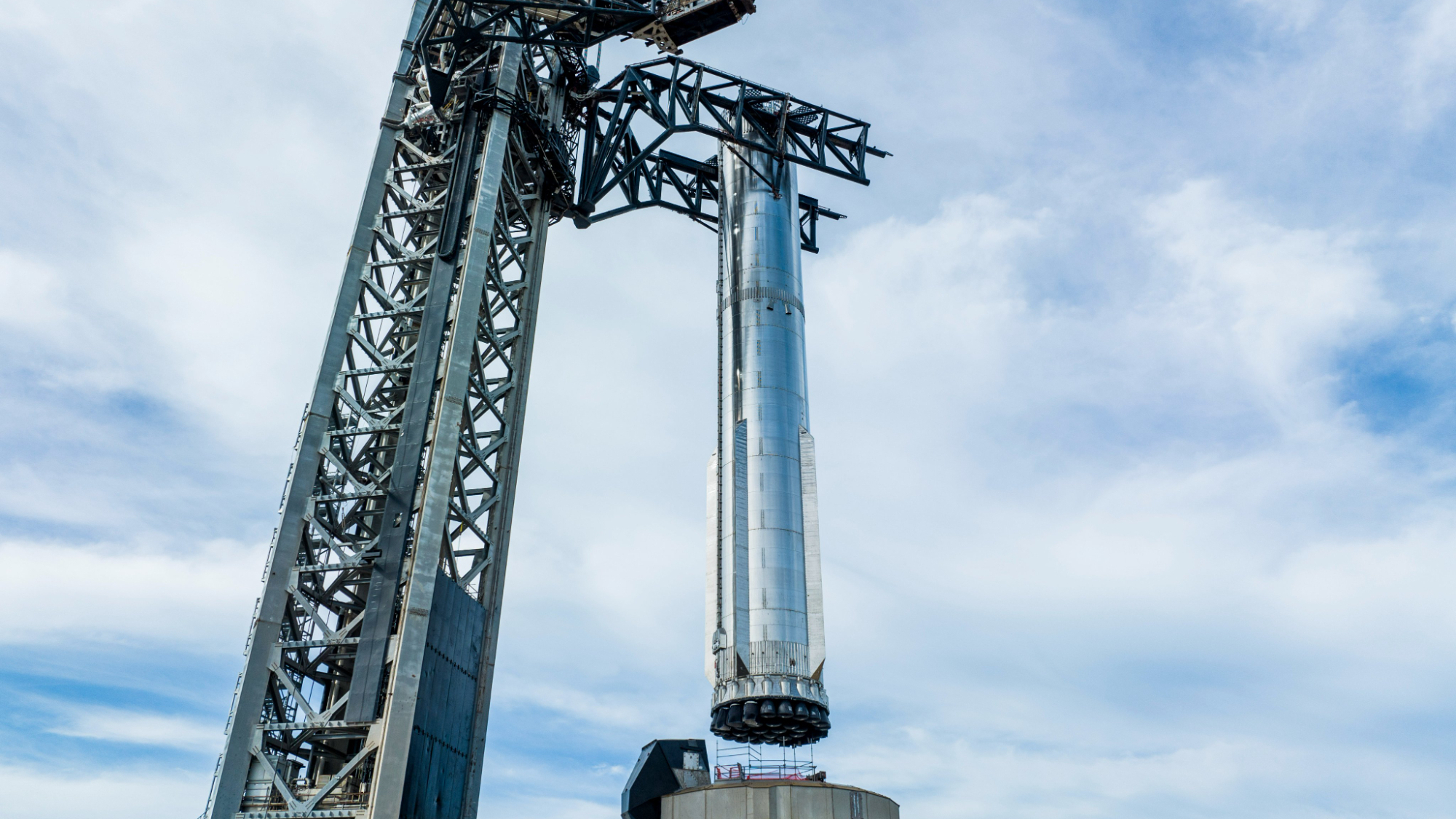SpaceX to launch next Starship test flight 'soon,' Elon Musk says (photos)

SpaceX continues to gear up for the next test flight of its huge Starship rocket.
The company recently hauled Booster 9 — the latest prototype of Super Heavy, Starship's gigantic first stage rocket — back to the orbital launch mount at its Starbase facility in South Texas "for additional preflight testing," SpaceX wrote via X (formerly Twitter) on Tuesday (Aug. 22).
That testing won't take too long, if all goes according to Elon Musk's plan. "Next Starship launch soon," the SpaceX founder and CEO wrote in reply to the company's Booster 9 post, which featured four photos of the rocket on the move.
Related: Relive SpaceX's explosive 1st Starship test in incredible launch photos
Starship is SpaceX's next-generation deep-space transportation system, which the company is developing to take people and cargo to the moon, Mars and beyond.
The vehicle consists of two elements, both of which are designed to be fully reusable: Super Heavy and a 165-foot-tall (50 meters) upper-stage spacecraft called Starship. The fully stacked Starship stands 394 feet (120 m) tall and is the biggest and most powerful rocket ever built.
The vehicle has flown just once to date, on an April 20 test flight from Starbase that aimed to send the Starship upper stage partway around Earth, with a splashdown targeted in the Pacific Ocean near Hawaii.
Breaking space news, the latest updates on rocket launches, skywatching events and more!
It didn't get nearly that far, however. The two stages failed to separate as planned, and SpaceX beamed up a self-destruct command, destroying Starship high above the Gulf of Mexico about four minutes after liftoff.
SpaceX began prepping for Starship's second test flight right after the first came to its explosive end.
The company has made more than 1,000 design changes to the vehicle, Musk said recently. Perhaps the most important alteration is a switch to "hot staging" — lighting the engines of Starship's upper stage before it has separated from the booster.
This new strategy required the installation of a "vented interstage" and a heat shield at the top of Booster 9, to protect it from the flames of its upper-stage companion, a prototype called Ship 25. SpaceX showed off photos of this hardware last week in another post on X.
That installation was done inside an assembly building at Starbase. SpaceX had moved Booster 9 there from the orbital launch mount, where the vehicle performed a successful "static fire" engine test on Aug. 6 — another important prelaunch trial.
Despite such progress, it's unclear when exactly Booster 9 and Ship 25 will fly. And Musk's "soon" prediction should not be seen as a guarantee; he tends to announce aggressive target dates, and the timeline in this case is not entirely up to him.
For example, the U.S. Federal Aviation Administration (FAA) has not granted a license for the coming Starship launch, as far as we know. The agency recently said that it's still reviewing the mishap report that SpaceX filed about the April 20 test flight.
In addition, a coalition of environmental and Indigenous groups is currently suing the FAA, claiming the agency didn't properly assess the damage that Starship launches can cause to the South Texas ecosystem and community.

Michael Wall is a Senior Space Writer with Space.com and joined the team in 2010. He primarily covers exoplanets, spaceflight and military space, but has been known to dabble in the space art beat. His book about the search for alien life, "Out There," was published on Nov. 13, 2018. Before becoming a science writer, Michael worked as a herpetologist and wildlife biologist. He has a Ph.D. in evolutionary biology from the University of Sydney, Australia, a bachelor's degree from the University of Arizona, and a graduate certificate in science writing from the University of California, Santa Cruz. To find out what his latest project is, you can follow Michael on Twitter.



